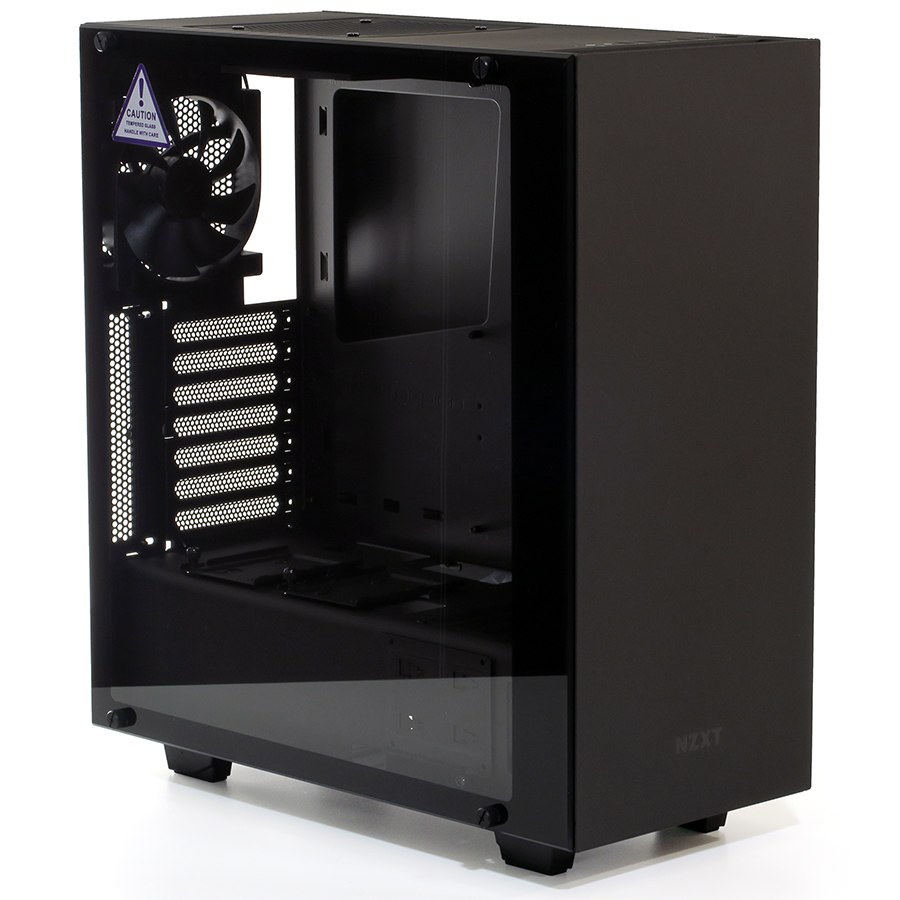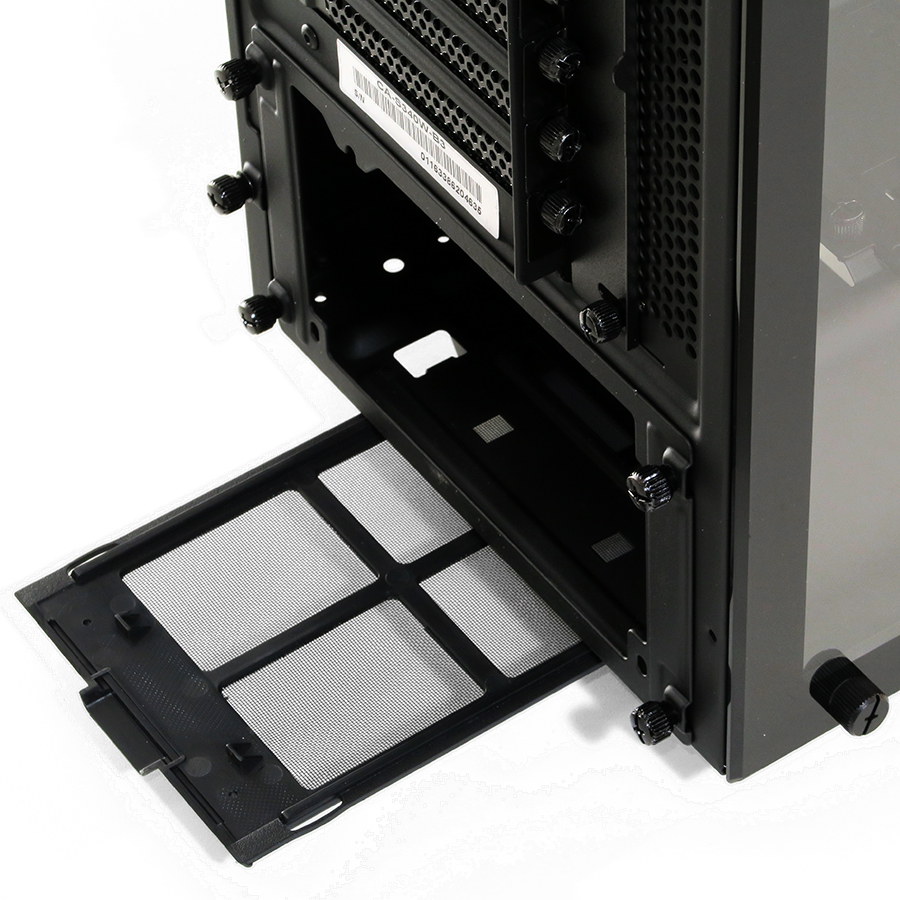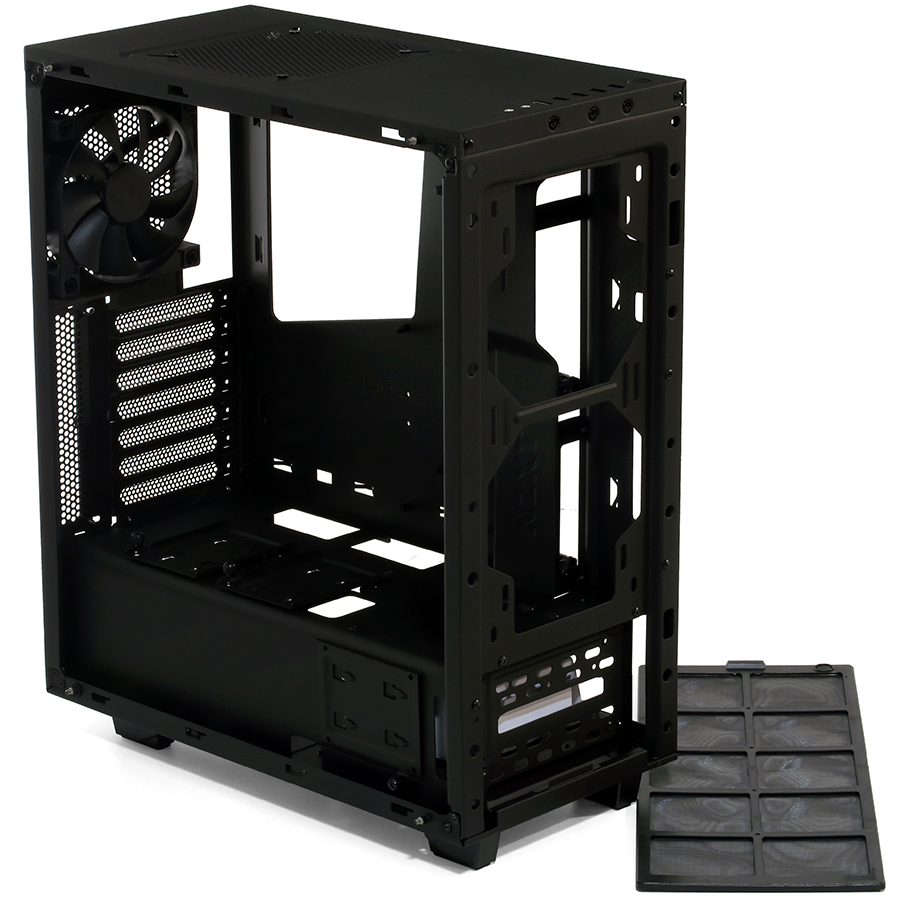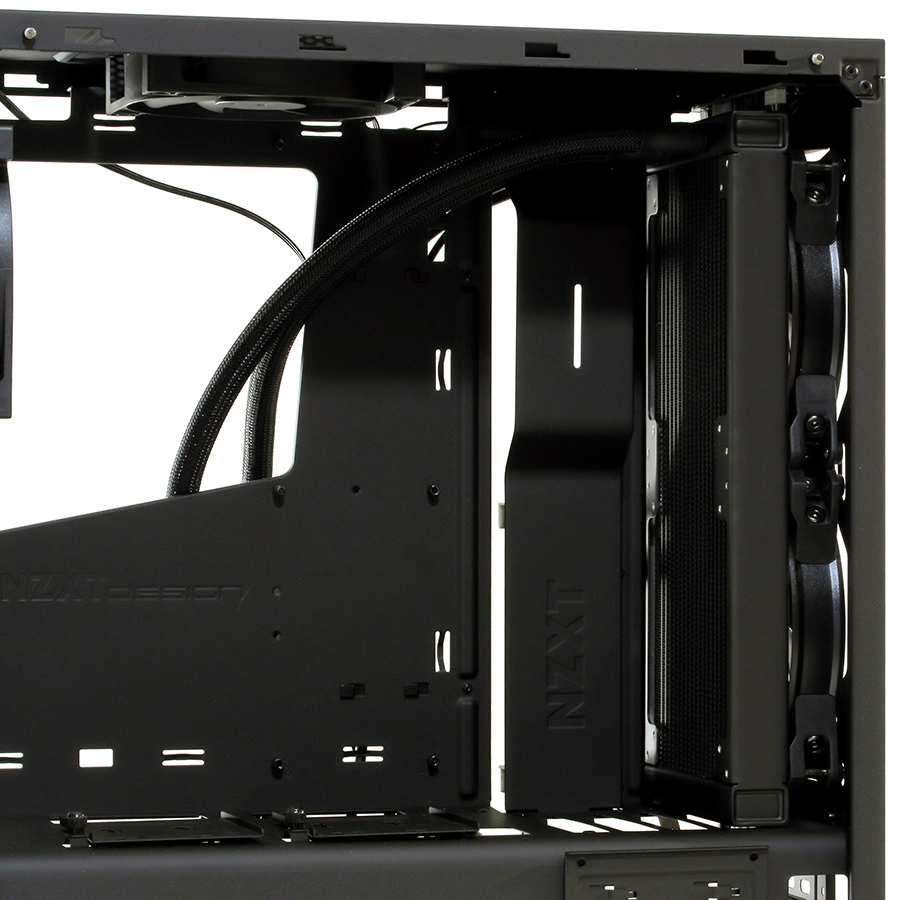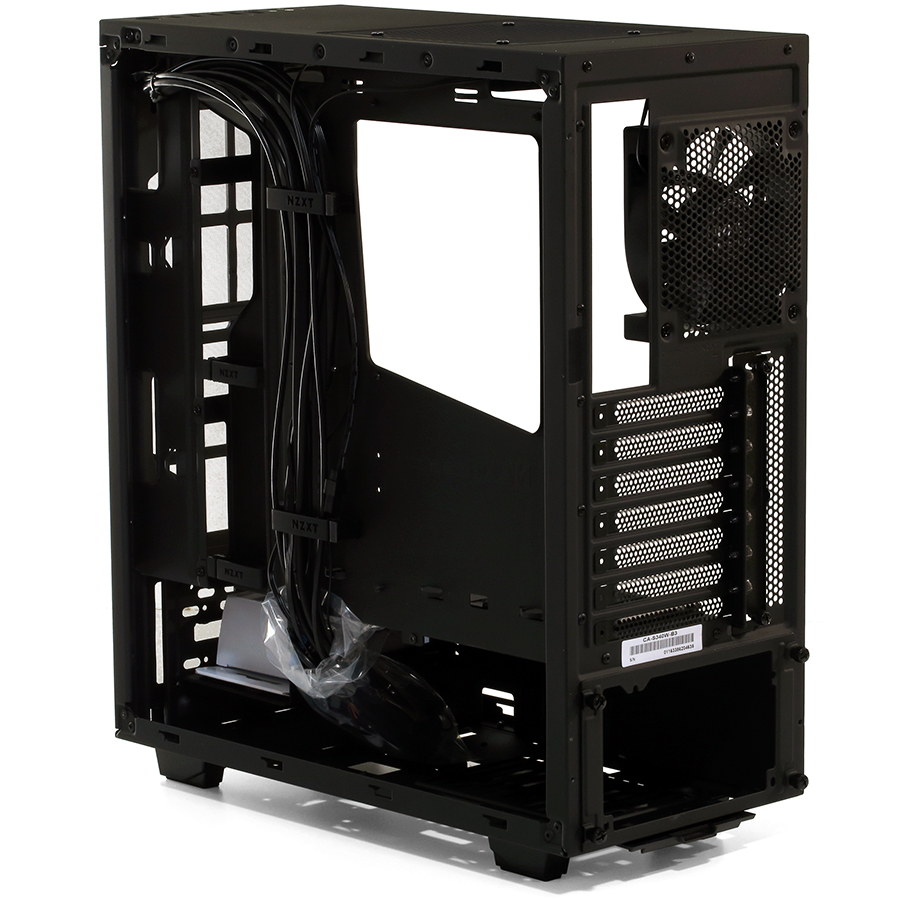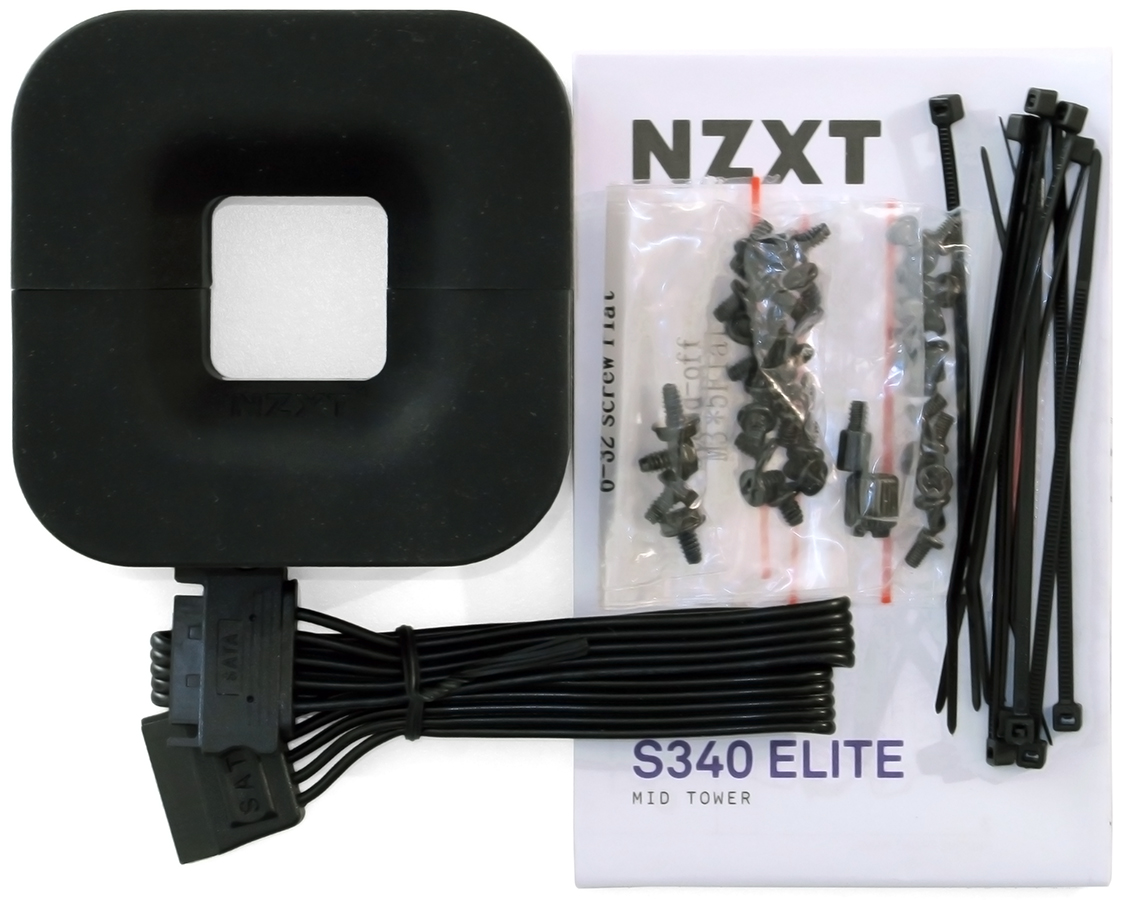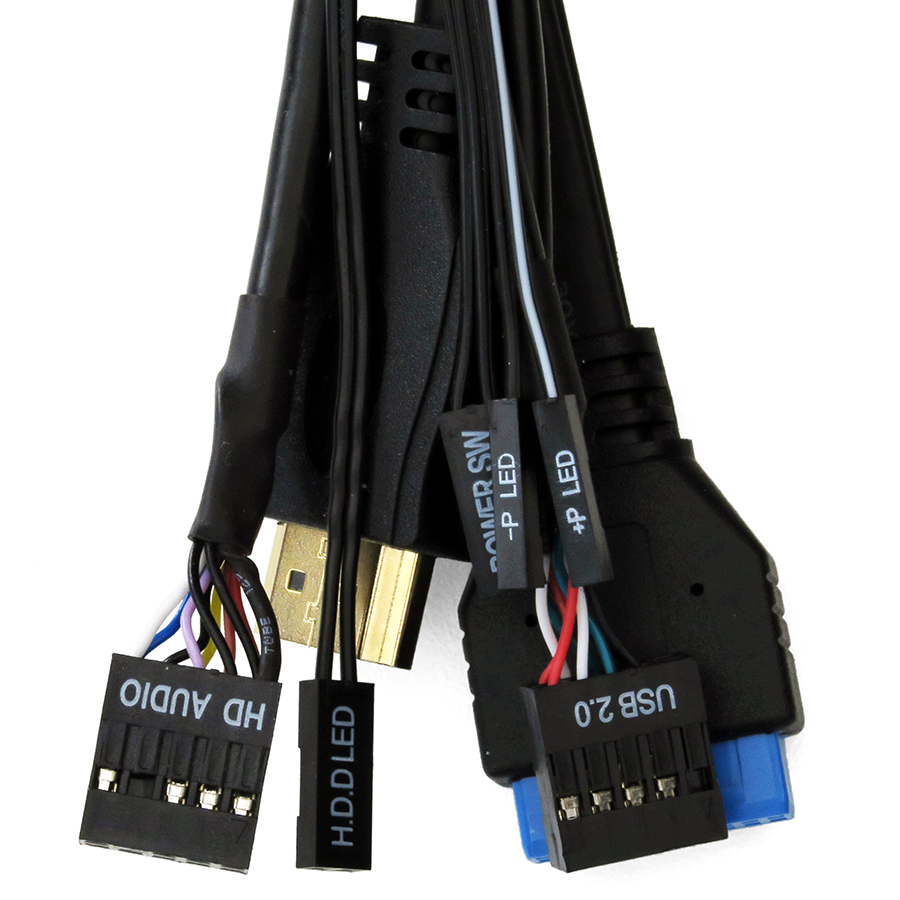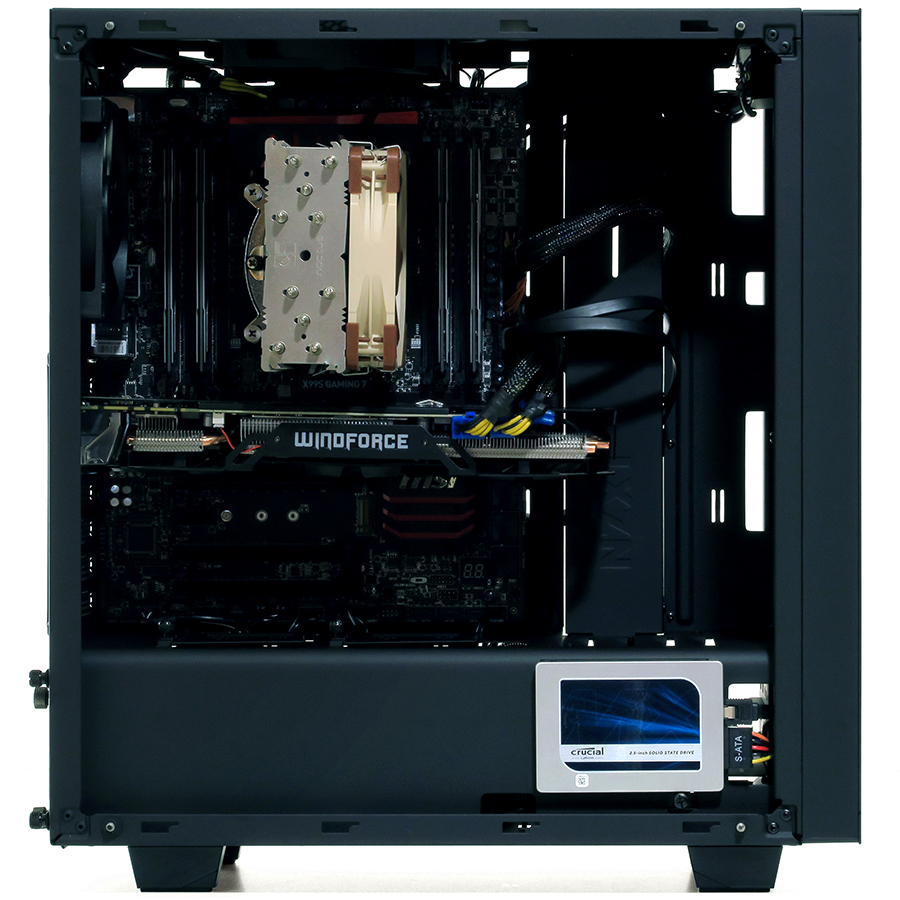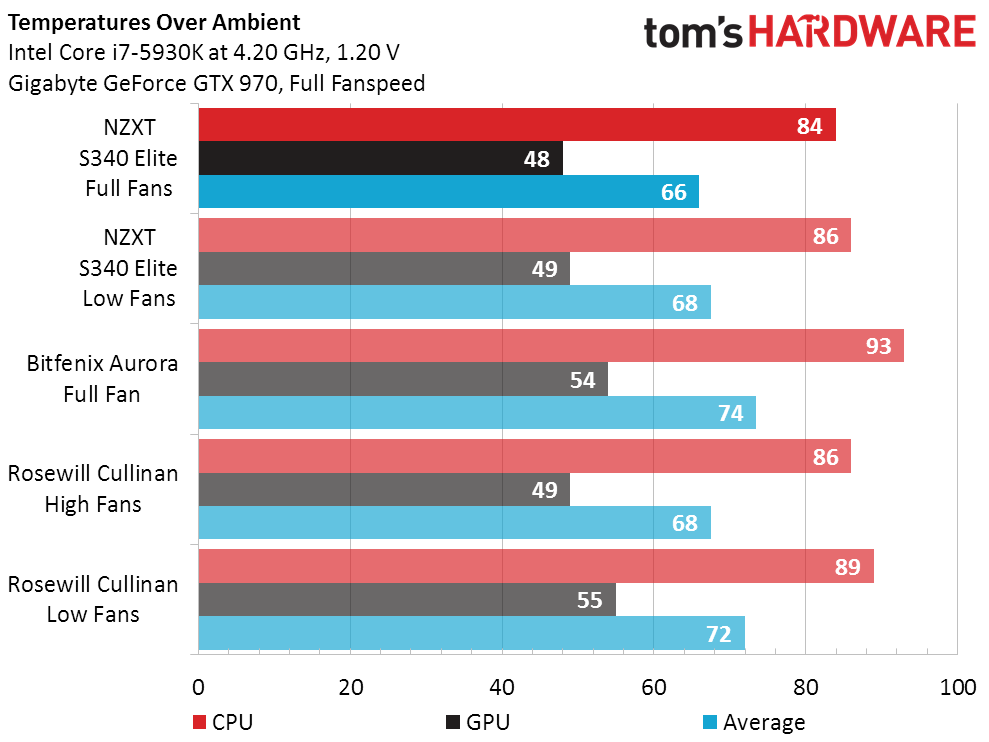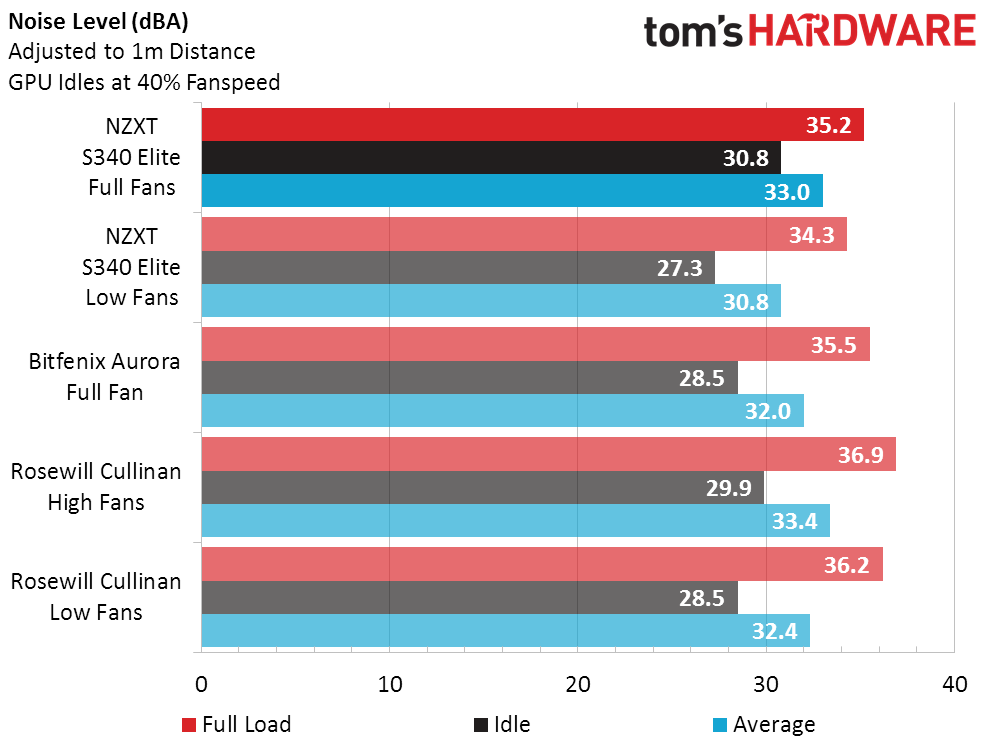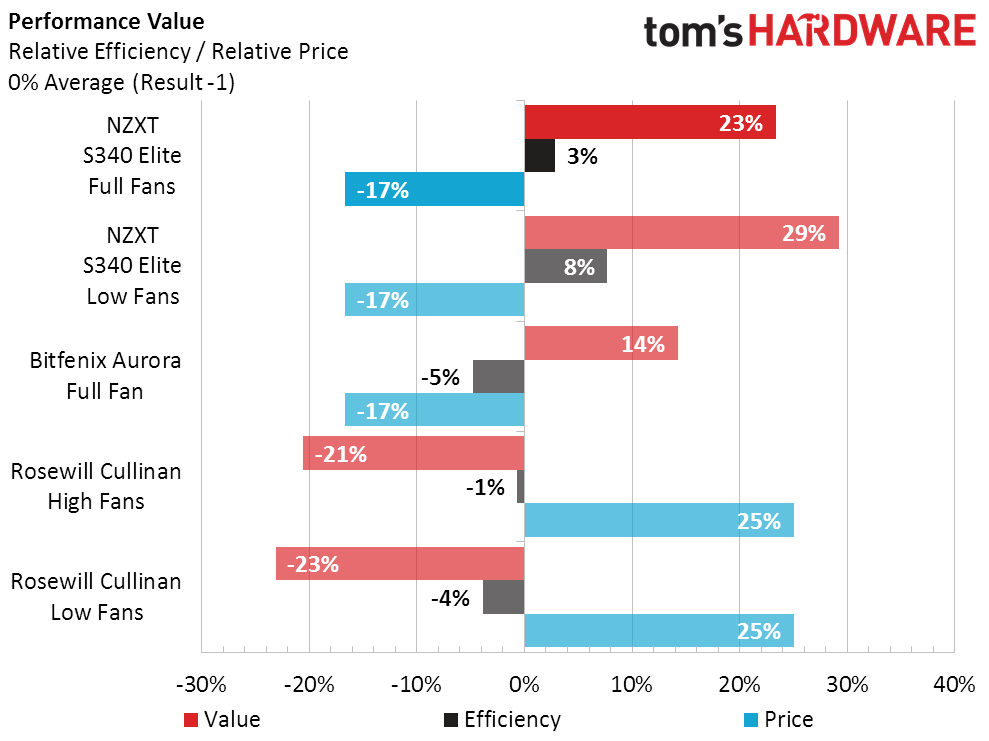Early Verdict
Performance alone gives NZXT’s S340 Elite our recommendation in the $100 glass-sided case market, even though some of its advanced features appear gimmicky, and even though some of its basic features seem cheap.
Pros
- +
Enhanced Cooling
- +
Good acoustic performance at reduced fan levels
- +
Traditional mid-tower compactness
- +
Supports oversized motherboards and dual-140mm-fan radiators
- +
Easy dust filter access and cleaning
- +
Steel face panel supports included, magnetic headphone bracket
Cons
- -
Face panel and dust filter must be removed to access hard drive screws
- -
External expansion card bracket can cause cumbersome card installation.
Why you can trust Tom's Hardware
MORE: Best Cases
MORE: All Case Content
Why would you want a glass side panel behind the motherboard, where the ugly cables are hidden? This oft-asked question has received numerous responses from various manufacturers by way of everything from dark panel tint to cable concealment components, as each of them tries to make the two sides match visually. In one of the most interesting recent approaches, Bitfenix even coated the inside of its right side glass panel with matte black paint. Yet that’s probably not the approach our value-minded buyers had in mind. This is:
Based on the low-cost NZXT S340, the S340 Elite adds just one glass side panel, along with a few other upgrades to push its price solidly into the middle market at $100. Among those upgrades are a magnetic headphone holder, an extra pair of front-panel USB ports, and a front-panel HDMI port.
All of these front-panel ports are located at the front edge of the top panel, and the added USB ports are only of the old 2.0 variety. The HDMI port is connected to a pass-through cable, and users who don’t want the extra connectors will probably just run the device cable around the back of the case anyway.
Around back we find seven expansion slots and a 120mm exhaust fan that can’t be upsized. A removable bracket allows the power supply to be slid into the back of the case to avoid interference with the riveted-in power supply shroud.
Beneath the power supply bracket, the power supply dust filter is large enough to provide adequate airflow. Above it, slot brackets are redundantly secured with both screws and a slot access hole cover. Designed to reduce manufacturing cost, slot holders with external tabs require expansion cards to be wiggled into position before these can finally be inserted into its expansion slot.
Get Tom's Hardware's best news and in-depth reviews, straight to your inbox.
The S340 Elite features a pull-off front panel, concealing a front dust filter that covers both fan mounts and one side of the lower hard drive cage. The dust filter is attached via magnets at the top and hooks into a recess at the bottom of its opening. Hard drives are secured using screws on the forward-facing side, which is the left side of the drive. Three SSD trays are attached using a single thumb screw, and each tray holds its drive via four more screws.
Radiators at up to 2x 140mm fan spacing and 2.5” combined thickness are supported between the front of the chassis and a removable cable shroud. There’s 13.25” of vertical clearance, and around ¾” (19mm) of that space is beneath the lower fan. Front panel ports require 1” of clearance, which is the same thickness as most intake fans, leaving the radiator’s top tank/cap pushed up against those cables and connectors. Builders concerned about that tight fit can add a gasket or spacer to their fans, or use 38mm-thick fans.
NZXT provides just over 5/8” (16mm) of cable clearance behind the S340 Elite’s motherboard tray, in addition to the extra space behind the forward cable shroud and under the power supply shroud.
The two factory-installed 120mm fans have three-pin motherboard connectors, which are factory-connected to a legacy ATA power adapter. Users who want their motherboards to control fan speed should disconnect the adapter.
Building With The NZXT S340 Elite
The S340 Elite’s installation kit includes several screws, a SATA power extender for the forward 2.5” tray, several cable ties, and a two-piece magnetic headphone bracket that will stick to any of the non-glass panels.
Cables include HD-Audio, USB 2.0 and USB 3.0, an HDMI extender meant to go from your graphics output to the front-panel HDMI port, and the front-panel switch/lead group with a split power LED connection.
Most of our cables were too stiff to loop nicely under the rear edge of the cable shroud, so I looped those over its front edge. Everything screws together as described in our How To Build A PC.
One look at the empty space might convince you that the S340 Elite could fit a full 13”-deep EATX motherboard by simply removing the screwed-on cable shroud, and you’d be correct in that assessment. NZXT doesn’t get the nod for this simply because the case doesn’t have a fourth column of standoffs for the front edge of a motherboard. It does have 10.6” of space between the cable shroud and I/O shield however, allowing oversized-ATX boards that have been mislabeled as EATX to fit.
The S340 Elite doesn’t have any internal lighting, but users who want to show off their internal components without lighting up the room should be pleased.
MORE: Best Motherboards
MORE: How To Choose A Motherboard
MORE: All Motherboard Content
Comparison Cases


Though the S340 Elite is closest in dimensions to the Fractal Design Define-C, NZXT sells a $70 version without the glass to compete with that $85 model. This Elite-branded version instead goes up against the two cheapest previously-reviewed glass-paneled cases, the Bitfenix Aurora and Rosewill Cullinan.
MORE: Best Power Supplies
MORE: How To Choose A PSU
MORE: All Power Supply Content
Test Results
One trend I’ve noticed is that the more glass a case has, the longer it takes to reach a consistent temperature. Glass is heavy and has a high thermal capacity, in spite of its mediocre conductivity.
Fortunately, the NZXT S340 Elite’s single panel allowed its temperature climb to taper off in under four hours, though I kept the test going for over six hours to be certain of my findings. The fact that it quit warming up earlier almost certainly resulted in a lower final temperature, its thermal performance beating even the mighty Cullinan.
The S340 Elite also beats its competitors in most of its noise tests, though the high noise level at idle indicates that the case’s fans are noisy at full speed. Users whose motherboard can control a 3-pin fan in response to thermal needs will definitely want to use that feature with these particular fans.
Since there are no absolutes in cooling, Acoustic Efficiency (aka cooling-to-noise ratio) is relative and uses the averages from all five tests as a base value. The S340 Elite squashes its competition at full fan speed, and climbs even higher with its fans using the motherboard’s low setting (50%). It’s clear that you’ll want to use motherboard headers if you can.
Priced identically to the Bitfenix Aurora, the S340 Elite produces up to 15% better overall performance, where overall performance is based on cooling-to-noise ratio. Aurora owners are perfectly welcome to add another fan, if they wish.
One of the problems with performance-to-price ratios is that they don’t reflect differences in features. The Bitfenix Aurora, for example, has two glass side panels and costs the same as the NZXT S340 Elite. I figured out a while back that two glass side panels add around $30 to the price of a budget case, but that doesn’t necessarily mean that a single glass panel adds only $15. The problem is that breakage in transit and extra packing material are part of the $30 you pay for the two-panel upgrade. Having a single panel doesn’t reduce breakage risk by 50%, nor does it allow manufacturers to split the difference on better packaging.
Rather than charge less for a single glass panel than its competitor charges for two, NZXT adds features to the S340 Elite to justify maintaining the same $100 price. Those features include an HDMI pass-through cable, a pair of USB 2.0 ports, and a magnetic headphone holder. The S340 Elite also has one more fan than its closest competitor, and the combination of more ventilation with less glass gives it a big performance advantage. It’s really hard to say whether the S340 Elite’s added features are worth exactly as much as those of the Aurora, but the extra performance earns it our recommendation.
MORE: Best Deals
MORE: Hot Bargains @PurchDeals
Follow us on Facebook, Google+, RSS, Twitter and YouTube.
-
eklipz330 beautiful case. if they come out with a usb C version by november next year, i will most likely pick it up. im done with optical drives.Reply -
jwcrellin Very similar to my phanteks enthoo pro m tempered. I'd say that the nzxt is optimal unless you need a optical drive like me.Reply -
Crashman Reply
The thing I liked most about it was its traditional mid-tower size.19086132 said:Very similar to my phanteks enthoo pro m tempered. I'd say that the nzxt is optimal unless you need a optical drive like me.
-
krelljelson Not enough gamer aesthetic. Needs more sharp diagonal lines, battle damage, robo-panels, and a cool embossed word on the side like "BRUTAL". Try again NZXT.Reply -
Co BIY Just about my perfect case!Reply
For perfection I'd want a stealth but easily accessed optical drive and let those ports face the front.
With that glass I want it on the desk not underneath. How about a gimmick where they can be installed either direction (forward or up) ? -
2Be_or_Not2Be I really never liked having USB and other I/O ports mounted on the top of the case. Seems too easy for dust to settle down into them. Even if they have a hinged cover, most of the time they are left open, especially if you have a headset connected all the time. I personally prefer ports on the side or front. I suppose top-mounted ports make sense for a case that's going to be on the floor (or low in a desk), but this case seems more like one you put on your desk rather than the floor.Reply -
JakeWearingKhakis Very nice case!Reply
I just got the Anidees AI Crystal case (which in my understanding is what Rosewill rebadged to make the Cullinan). I brought it to MAGFest and it got a lot of attention for how it looks. It has a lot of similarities to this case, but also has smoked glass on the other side and the front. EXTREMELY heavy lol... It also has room/vents for a 360 radiator up top and in front.
I'm extremely pleased with the aesthetics and workmanship, but the space for cables behind the motherboard is way too tight, that you almost feel like the glass will shatter.
If that's a problem for you, and you only have a small AIO liquid cooler then this NZXT case looks like a premium pick.
